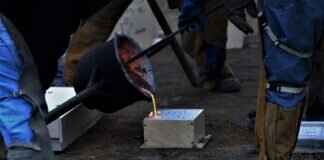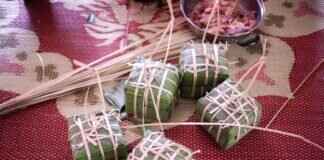Are you ready to dive into the captivating world of Bajo Quintos and unleash your musical creativity? This traditional Mexican instrument, a cornerstone of Norteño and Tejano music, is gaining immense popularity among musicians globally. Whether you’re a seasoned guitarist looking to expand your repertoire or a music enthusiast curious about rich cultural sounds, the Bajo Quinto offers a unique blend of harmonic possibilities and rhythmic foundations that can transform your musical journey. In this blog post, we will explore how learning the Bajo Quinto can elevate your skills, enrich your performances, and open doors to a vibrant musical community. Have you ever wondered how the Bajo Quinto’s deep, resonant tones can complement various music genres? Or why many artists are incorporating its majestic sound into contemporary music? Stay tuned as we unlock the secrets of Bajo Quintos, providing you with essential tips, techniques, and insights to master this spectacular instrument. Embrace the opportunity to discover the magic of Bajo Quintos and see how it can amplify your musical potential!
What is a Bajo Quinto? Unveiling the Roots of This Traditional Instrument
What is a Bajo Quinto? Unveiling the Roots of This Traditional Instrument
The Bajo Quinto is a captivating stringed instrument deeply rooted in the musical traditions of Mexico, particularly within the genres of Norteño and Tejano music. Its name, translating to “fifth bass” in English, hints at its foundational role in the rhythm and harmony of the music it accompanies. The Bajo Quinto’s rich history and unique sound make it an essential element of Latin American musical heritage.
Historical Background
The Bajo Quinto originated in the 19th century in Northern Mexico and the Southwestern United States. It evolved from the Spanish classical guitar and shares some characteristics with other traditional stringed instruments like the lute and vihuela. Over the years, it has undergone various modifications, adapting to the evolving music styles and preferences of the regions where it is played.
Design and Construction
Typically, the Bajo Quinto is crafted with ten strings arranged in five courses. The most common configuration includes doubled strings, often with a combination of nylon and steel strings to produce its distinctive, resonant sound. The body shape resembles that of a guitar but is usually larger and deeper, which contributes to its robust tonality.
The craftsmanship involved in making a Bajo Quinto is a blend of traditional luthiery and modern innovation, with wood types like spruce, cedar, and rosewood being preferred for their acoustic properties. The intricate decorations and finishes often reflect the cultural significance and personal style of the musician.
Musical Role and Techniques
In a typical ensemble, the Bajo Quinto serves as a rhythmic and harmonic foundation, supporting the melody played by other instruments like the accordion or violin. Its playing technique involves a combination of strumming and picking, allowing the musician to produce a range of dynamics from subtle background textures to powerful rhythmic accents.
Discover the Magic of Bajo Quintos: Unleash Your Musical Potential
For musicians looking to explore new sounds or deepen their understanding of Latin American music, mastering the Bajo Quinto offers a unique opportunity. The instrument’s versatility makes it suitable for various musical styles beyond traditional Norteño or Tejano, including folk, country, and even rock.
Learning and Mastery
Embarking on the journey to learn the Bajo Quinto involves understanding its musical context and mastering the specific techniques required to play it effectively. Prospective players should focus on developing a strong sense of rhythm and the ability to coordinate with other musicians in a group setting. Resources for learning can range from online tutorials and books to lessons from experienced players.
Cultural Significance
Playing the Bajo Quinto also carries cultural responsibilities. It is a means of preserving and passing on musical traditions that have been integral to community life in many regions. Musicians are encouraged to engage with the cultural aspects of the music, including its history, lyrical content, and the social functions it serves.
Conclusion
The
Exploring the Unique Sound: How Does a Bajo Quinto Differ from a Guitar?
Exploring the Unique Sound: How Does a Bajo Quinto Differ from a Guitar?
The Bajo Quinto, a staple in traditional Mexican music, particularly in the genres of Norteño and Tejano, offers a resonant depth that enriches the musical landscape. This string instrument, often paired with the accordion, is pivotal in creating the distinctive sound of these regional styles. But how does it differ from the more universally recognized guitar? Understanding these differences not only highlights the bajo quinto’s unique characteristics but also its role in musical compositions.
Design and Construction
The Bajo Quinto is typically larger than a standard acoustic guitar, featuring a broader body that helps produce its deep, booming sound. While both instruments are crafted from wood, the bajo quinto often utilizes specific types such as spruce or cedar for the top and rosewood or mahogany for the back and sides, chosen for their resonant qualities.
In terms of strings, a standard guitar has six strings. In contrast, the Bajo Quinto is equipped with ten strings arranged in five courses. These are usually doubled strings tuned in unison or octaves, adding to its rich and full-bodied sound. This configuration is crucial in delivering the vibrant, rhythmic chords that define the rhythmic foundation in many traditional Mexican songs.
Tuning and Playability
Tuning a Bajo Quinto also sets it apart from the guitar. Typically, it is tuned to A/D/G/C/F from the lowest to the highest course, allowing for a range that complements the traditional bass and treble clefs used in many folk compositions. This tuning supports the bajo quinto’s role in providing both melodic lines and harmonic support, making it a versatile instrument in group settings.
Playing techniques also differ markedly. Bajo Quinto players often use a combination of finger strumming and picking to articulate the complex rhythms typical of Norteño music, whereas guitar techniques can vary widely across different genres, from strumming and fingerpicking to flat-picking.
Musical Role and Context
The bajo quinto’s role extends beyond just being a musical instrument; it is a cultural emblem. It’s not typically used as a solo instrument but as part of a larger ensemble, providing rhythmic and harmonic structure that supports other lead instruments like the accordion or violin. This contrasts with the guitar, which is incredibly versatile and used across various genres worldwide, both as a solo and accompanying instrument.
Discover the Magic of Bajo Quintos: Unleash Your Musical Potential
The bajo quinto is not just an instrument but an avenue for cultural expression and creativity. For musicians looking to explore different sounds, the bajo quinto offers a gateway to not only learn a new instrument but to dive into the rich cultural traditions of Mexican music.
Learning and Mastery
For guitarists, the transition to bajo quinto can be both challenging and rewarding. The basics of fretting and strumming can transfer over, but
Top 5 Bajo Quinto Players You Should Know About
Discover the Magic of Bajo Quintos: Unleash Your Musical Potential
The bajo quinto, a pivotal instrument in the realm of traditional Mexican and Tex-Mex music, is a richly voiced string instrument that adds depth and resonance to the musical compositions it graces. Featuring ten strings in five courses and resembling a robust acoustic guitar, the bajo quinto has roots deeply embedded in the folk and norteño genres, offering a harmonic foundation that complements the accordion and other lead instruments.
In this article, we explore the enchanting world of bajo quintos, highlighting five of the most influential bajo quinto players you should know about, and providing insights into how this instrument can expand your musical horizons.
Top 5 Bajo Quinto Players You Should Know About
Juan Seguín
Often revered as a master of the bajo quinto, Juan Seguín’s contributions to traditional Mexican music are profound. His ability to blend intricate rhythms with melodic overtones has made him a sought-after musician and an influential figure in popularizing the bajo quinto across musical borders.
Mario Saenz
Mario Saenz is known for his innovative approach to playing the bajo quinto, incorporating elements from various musical genres to create a unique sound that resonates with a modern audience. His technique and musicality have inspired a new generation of musicians to explore the traditional sounds of norteño with a contemporary twist.
Alicia Villarreal
Perhaps one of the most versatile musicians in the Latin music scene, Alicia Villarreal has showcased her prowess on the bajo quinto with Grupo Limite. Her ability to fuse traditional elements with pop and country tones has brought the bajo quinto to mainstream attention in Latin music.
Ernesto Núñez
A virtuoso in his own right, Ernesto Núñez has been pivotal in advancing the bajo quinto as a solo instrument. His performances are marked by technical skill and emotional depth, pushing the boundaries of what the bajo quinto can achieve in both solo and ensemble settings.
Lázaro Pérez
Lázaro Pérez, leader of the Lázaro Pérez y su Conjunto, has been instrumental in maintaining the traditional sound of the bajo quinto while also experimenting with its potential in different musical contexts. His work has been crucial in preserving the cultural heritage of the instrument.
Enhancing Your Musical Journey with the Bajo Quinto
The bajo quinto is not just a musical instrument; it is a vehicle for cultural expression and creativity. Its rich, deep sound provides a perfect accompaniment to a wide range of musical styles, making it an excellent addition to any musician’s arsenal. Learning to play the bajo quinto can open up new avenues for creative expression and deepen your understanding of Latin musical traditions.
Practical Insights for Aspiring Bajo Quinto Players
Understanding the Basics
Beginner’s Guide to Bajo Quinto: Essentials for Getting Started
Beginner’s Guide to Bajo Quinto: Essentials for Getting Started
The Bajo Quinto is a captivating musical instrument with deep roots in Mexican music, particularly within the genres of norteño and tejano. Its rich, deep sound provides the harmonic and rhythmic foundation that complements the melodic lines of the accordion, making it a staple in traditional Mexican folk music. If you’re new to this instrument, here’s your comprehensive beginner’s guide to understanding and playing the Bajo Quinto.
Understanding the Bajo Quinto
The Bajo Quinto is a traditional five-course baritone guitar, typically featuring ten strings in pairs. Its body is larger than that of a standard guitar, contributing to its deeper, resonant sound. Traditionally, it is made from wood such as spruce or cedar for the top, and rosewood or mahogany for the back and sides. This construction plays a key role in its sound quality and playability.
Choosing Your First Bajo Quinto
Selecting your first Bajo Quinto is pivotal. Look for instruments with a comfortable neck and smooth fretboard, as these features will significantly affect your ability to practice and perform. Beginners might consider starting with a lower-priced model, but ensure it maintains good build quality to avoid frequent tuning and maintenance issues.
Essential Accessories
Strings: Bajo Quinto strings are unique; thus, having spare sets is crucial.
Picks: Picks can vary in material and thickness, influencing how the instrument sounds.
Strap: Given its size, a durable strap is necessary for playing comfortably.
Tuner: A tuner is indispensable in keeping your Bajo Quinto sounding its best.
Learning to Play the Bajo Quinto
Start with basic strumming patterns and chord shapes, which are fundamental in norteño and tejano music. There are numerous online tutorials and books specifically tailored to beginners. Additionally, consider taking lessons from experienced players to fast-track your learning process.
Discover the Magic of Bajo Quintos: Unleash Your Musical Potential
Playing the Bajo Quinto is not just about learning an instrument—it’s about experiencing a rich cultural tradition. Whether integrated into a conjunto ensemble or played as a solo instrument, the Bajo Quinto offers a unique opportunity to explore a variety of musical styles.
Musical Exploration
Experiment with different genres beyond traditional Mexican music. The versatile nature of the Bajo Quinto makes it suitable for country, folk, and even rock music. This adaptability can enhance your musical repertoire and versatility as a musician.
Performance Opportunities
As you gain confidence and skill, look for opportunities to perform. Join local music groups, participate in cultural festivals, or even share your music online. Performing is not only fulfilling but also a great way to connect with other musicians and enthusiasts.
Enhancing Your Skills
Continuously challenge yourself with new techniques and complex pieces. Advanced methods like fingerp
Crafting Excellence: The Art Behind Making a Bajo Quinto
Crafting Excellence: The Art Behind Making a Bajo Quinto
The bajo quinto, a cornerstone of traditional Mexican music, particularly within the genres of norteño and Tejano, is an instrument that boasts a rich cultural heritage. This ten-stringed instrument, resembling a large guitar, is pivotal in providing the rhythmic and harmonic foundation in ensembles. Understanding the detailed craftsmanship that goes into making a bajo quinto reveals why it is cherished by musicians and artisans alike.
The Craftsmanship of Bajo Quintos
The construction of a bajo quinto is an art form passed down through generations, blending traditional methods with modern innovations. The body, typically made from high-quality wood such as spruce, mahogany, or rosewood, is crucial for producing its deep, resonant sound. Artisans, known as luthiers, carefully select woods for the top, back, and sides of the instrument, ensuring each piece resonates perfectly.
The distinctive feature of the bajo quinto is its double course of five strings. Usually, these are arranged as ten strings in five double courses: the first four pairs are tuned in unison, while the fifth pair is tuned in octaves. This unique configuration enriches the harmonic output and enables the bajo quinto to produce its characteristic vibrant, full-bodied sound.
Crafting a bajo quinto also involves intricate inlay work and varnishing, which not only protect the wood but also enhance its aesthetic appeal. The fretwork, too, demands precision to facilitate ease of playability and to maximize the instrument’s sonic potential.
Discover the Magic of Bajo Quintos: Unleash Your Musical Potential
For musicians, the bajo quinto offers a gateway to explore a vast spectrum of sounds. Its versatility makes it suitable for various musical styles beyond traditional Mexican folk music, adapting well to modern musical genres like country, blues, and rock. The robust, rich tones of the bajo quinto can complement other string instruments, making it a valuable addition to any band seeking a fuller, more layered sound.
Playing the bajo quinto requires mastery of specific techniques to fully exploit its rhythmic capabilities and melodic potential. Musicians often employ a combination of strumming and fingerpicking to articulate the nuanced rhythms and chords that define the music of northern Mexico and the southern United States.
Engaging with Bajo Quintos
For those interested in learning to play the bajo quinto, a number of resources are available. Many community music schools offer classes focusing on traditional Mexican music. Additionally, online tutorials and workshops hosted by skilled bajo quinto players can provide valuable insights and practical tips for both beginners and advanced musicians.
Moreover, the growing popularity of the bajo quinto among diverse audiences has led to increased availability of these instruments outside of Mexico. Many music stores now carry a range of bajo quintos, from entry-level models made by machine to handcrafted instruments designed by renowned luthiers.
Conclusion
The bajo qu
Mastering Bajo Quinto Techniques: Tips for Enhancing Your Play Style
Mastering Bajo Quinto Techniques: Tips for Enhancing Your Play Style
The bajo quinto, a pivotal instrument in traditional Mexican music, especially within the genres of norteño and Tejano, has gradually gained recognition on the global music scene. This ten-stringed instrument is not just a musical tool but a cultural emblem that brings a distinctive sound and depth to the compositions it graces. For musicians looking to explore or master the bajo quinto, understanding its unique characteristics and mastering specific techniques can significantly enhance your play style.
Understanding the Basics of Bajo Quinto
The bajo quinto is traditionally paired with the accordion and provides a rhythmic and harmonic foundation that underpins the melody. Its body resembles that of a guitar but is slightly larger, and it is typically strung with ten strings arranged in five courses. The tuning is generally similar to that of a 12-string guitar, minus the two lowest strings, which allows the instrument to produce a rich, full sound.
Techniques to Enhance Your Bajo Quinto Play Style
Fingerpicking Mastery: Unlike the typical strumming in guitar playing, bajo quinto players should develop proficient fingerpicking techniques. This style allows for greater control over the polyphonic capabilities of the instrument. Practicing scales and arpeggios can improve your dexterity and finger strength, essential for mastering this technique.
Chord Progressions and Variations: Familiarity with a wide range of chord progressions is crucial. The bajo quinto can play a fundamental role in defining the harmonic structure of a song. Experiment with different chord shapes and progressions to discover unique sounds and enhance your musical arrangements.
Integrating Bass Lines: While primarily a rhythm instrument, integrating walking bass lines into your playing can add a new layer of depth to music. This technique involves playing a bass note for each chord, mimicking what a bass guitar might do, which enriches the overall sound.
Dynamic Control: Dynamics play a significant role in the expression of music. Learning to control the intensity of your playing, from soft whispers to powerful strums, can make your performance more expressive and emotionally engaging.
Syncopation and Rhythmic Complexity: The bajo quinto excels in providing rhythmic backbone. Experiment with syncopated rhythms and complex time signatures to add interest and challenge the listener’s expectations.
Discover the Magic of Bajo Quintos: Unleash Your Musical Potential
The magic of the bajo quinto lies not just in its rich sound but also in its versatility. It can adapt to various music styles beyond traditional Mexican genres, including country, folk, and even rock. This adaptability opens up a plethora of opportunities for creative expression and innovation in music composition.
Unleashing Your Musical Potential with the Bajo Quinto
Experimentation: Don’t be afraid to step out of traditional boundaries. Try using
The Role of Bajo Quintos in Norteño Music: A Cultural Deep Dive
The Role of Bajo Quintos in Norteño Music: A Cultural Deep Dive
The bajo quinto, a traditional Mexican string instrument, plays an indispensable role in the rich tapestry of Norteño music, a genre deeply rooted in the cultural landscape of Northern Mexico and the southern United States. This ten-stringed instrument, often paired with the accordion, not only defines the sound of Norteño music but also serves as a cultural symbol of regional identity and musical heritage.
Historical Context and Evolution
The origins of the bajo quinto are intertwined with the evolution of Mexican folk music. Emerging in the late 19th century, the bajo quinto was initially used in traditional Mexican “musica campirana” (country music) before becoming a cornerstone of Norteño music, which itself evolved from a blend of German, Polish, and Czech immigrant polkas and waltzes with Mexican ranchera music. This fusion created a distinctive sound characterized by its lively rhythms and poignant narratives.
Over the decades, the bajo quinto has undergone several modifications. Originally a five-double-string instrument, modern bajo quintos typically feature ten strings, arranged in five courses. This design enhances its rich, deep tones which perfectly complement the higher-pitched sounds of the accordion, creating a full, robust musical experience that is synonymous with Norteño bands.
Cultural Significance
In Norteño music, the bajo quinto is more than just an instrument; it is a storyteller. Its robust sound supports the singer, underlining the emotional weight of the lyrics, which often explore themes of love, social injustices, and life in rural areas. The powerful strumming of the bajo quinto resonates with listeners, fostering a sense of community and shared heritage among audiences. This cultural resonance ensures that the bajo quinto remains a cherished element of Norteño music, embodying the spirit and struggles of the people.
Playing Techniques and Musical Integration
Playing the bajo quinto requires considerable skill and an understanding of its unique strumming patterns and chordal structures. Musicians often use a combination of fingerpicking and strumming to produce a rhythmically complex and harmonically rich sound that drives the music forward. This technique, known as “rasgueado,” is crucial for maintaining the vibrant, energetic tempo that Norteño songs are known for.
Moreover, the integration of the bajo quinto in modern music extends beyond traditional Norteño tunes. Contemporary artists and bands blend its distinctive sound with other genres like pop, rock, and even jazz, demonstrating its versatility and enduring appeal.
Discover the Magic of Bajo Quintos: Unleash Your Musical Potential
For aspiring musicians, learning to play the bajo quinto offers a gateway not only to mastering a unique instrument but also to exploring a rich cultural landscape through music. Whether you are a seasoned musician looking to expand your repertoire or a beginner eager to embark on a musical journey, the bajo quinto provides a challenging yet rewarding experience.
Practical Insights
Choosing the Right Bajo Quinto: What to Look for When Buying
Choosing the Right Bajo Quinto: What to Look for When Buying
The Bajo Quinto, a staple in traditional Mexican music, particularly within the genres of norteño and Tejano, is a powerful musical instrument that captures the essence of folk and contemporary music with its rich, deep sounds. This ten-stringed instrument, which closely resembles the 12-string guitar, plays a crucial role in the rhythm section of a group, providing both melodic and chordal support. If you’re considering purchasing a Bajo Quinto, understanding the key features to look for can help you make an informed decision.
Quality of Craftsmanship
First and foremost, the quality of craftsmanship is paramount when choosing a Bajo Quinto. A well-crafted instrument not only lasts longer but also provides better sound quality. Look for instruments made from high-quality woods such as spruce, cedar, or mahogany for the top, and rosewood or maple for the sides and back. The choice of wood significantly impacts the tonal qualities of the Bajo Quinto, with softer woods providing a warmer tone and harder woods delivering a brighter sound.
Construction and Design
The construction of the Bajo Quinto should be sturdy and well-assembled. Check the joints and bindings to ensure they are tight and well-glued. The finish should be smooth and free of any bubbles or inconsistencies. Additionally, the design of the Bajo Quinto can vary, so consider the aesthetics that appeal to you, from traditional to more modern looks, including the intricacies of inlay work and the finish of the wood.
Playability and Comfort
Playability is another critical factor. The action, or the height of the strings above the fretboard, should be low enough to allow comfortable playing without causing fret buzz. The neck should feel comfortable in your hand, and the weight of the instrument should be balanced. Trying out different bajo quintos to see how they feel in your hands is advisable, as personal comfort significantly enhances playing experience.
Sound Quality
The sound of the Bajo Quinto should be rich and full, with a good balance between the bass and treble notes. It should resonate well and sustain notes clearly. Listen for any dead spots on the fretboard or unwanted buzzing noises. A good Bajo Quinto will have a powerful projection that can hold its own in ensemble settings.
Price and Brand
When it comes to price, Bajo Quintos can vary significantly depending on the brand, materials used, and where they are manufactured. Set a budget before you start your search but be prepared to invest in a quality instrument. Sometimes, paying a bit more upfront can save money in the long run through fewer repairs and better sound quality. Trusted brands often offer a good balance of quality and value, providing assurance in terms of warranty and customer service.
Discover the Magic of Bajo Quintos: Unleash Your Musical Potential
Embracing the Bajo Quinto
How to Tune a Bajo Quinto: Step-by-Step Instructions for Perfect Harmony
Discover the Magic of Bajo Quintos: Unleash Your Musical Potential
The bajo quinto, a cornerstone of traditional Mexican music, particularly in genres like norteño and tejano, is an instrument that commands attention with its deep, resonant sound. Boasting ten strings arranged in five double courses, this rich-sounding instrument is closely related to the 12-string guitar and the bajo sexto, which adds an additional two strings. For musicians looking to explore the vibrant textures of Latin American music, mastering the bajo quinto offers a unique opportunity to enhance their musical repertoire.
Tuning Your Bajo Quinto: A Step-by-Step Guide to Perfect Harmony
Tuning a bajo quinto can be a daunting task, especially for beginners. However, with the right guidance, achieving the perfect harmony is entirely feasible. Here’s a detailed, step-by-step guide to help you tune your bajo quinto for optimal sound.
Step 1: Understanding Standard Tuning
The standard tuning for a bajo quinto from lowest to highest string is typically A, D, G, C, E. Each “course” of two strings is usually tuned to the same note, with one string often tuned an octave higher than its partner. This setup contributes to the bajo quinto’s rich and full-bodied sound.
Step 2: Choosing the Right Tools
To begin tuning, you will need a reliable chromatic tuner. This tool is essential for beginners and professionals alike, as it ensures accuracy during the tuning process. There are many tuners available, including clip-on models and tuning apps for smartphones, which are particularly useful in noisy environments.
Step 3: Setting the Low A String
Start by tuning the lowest course (the two A strings). Strike the lowest pitched A string and adjust until your tuner indicates that it is in tune. Next, tune the second string in the course, which should be an octave higher than the first.
Step 4: Proceeding with Other Courses
Move next to the D course and repeat the tuning process, ensuring both strings are perfectly aligned in pitch. Continue this method with the G, C, and E courses. Remember, the goal is to have one string of each course tuned an octave higher than the other, except for the highest E course, which is typically tuned in unison.
Step 5: Fine-Tuning
Once all courses are tuned, go through each again for fine-tuning. Changes in one string can slightly alter the tension and pitch of the others, so it’s important to double-check each course.
Step 6: Regular Maintenance
Keep in mind that new strings or changes in humidity and temperature can affect your tuning. Regular checks and adjustments are necessary to keep your bajo quinto sounding its best.
Expanding Your Musical Horizons with the Bajo Quinto
Learning to tune and play the bajo quinto not only enriches your musical skills but also deepens your
The Best Online Resources for Learning Bajo Quinto
Discover the Magic of Bajo Quintos: Unleash Your Musical Potential
The bajo quinto, a staple in traditional Mexican music, particularly within the genres of norteño and Tejano, is a musical instrument that resembles a 12-string guitar but holds its own unique charm and sound. With ten strings arranged in five courses, the bajo quinto complements the accordion and provides a rich, deep accompaniment that is essential to the texture of these music styles. As interest in diverse musical instruments rises, many are drawn to learn the bajo quinto, intrigued by its distinctive sound and cultural significance. This article explores the best online resources for learning the bajo quinto, designed to help enthusiasts at all levels unlock their musical potential.
Online Platforms Offering Bajo Quinto Lessons
TrueFire
Known for its comprehensive guitar lessons, TrueFire also offers specialized courses for bajo quinto. The platform provides video lessons that cater to different skill levels, from beginners to advanced players. Each lesson is detailed and includes close-up views of finger placements and strumming techniques, making it easier for students to follow along.
Udemy
Udemy features a variety of courses tailored to learning the bajo quinto. These courses are created by experienced musicians and include hours of video content, along with supplementary materials like tabs and practice exercises. One of the advantages of Udemy is the one-time purchase for lifetime access, allowing learners to proceed at their own pace.
YouTube
YouTube remains a free and valuable resource for music learners. Channels such as Fernando’s Guitar Workshops or Bajo Sexto Adictos offer regular tutorials and tips that cover everything from basic chords to complex melodies. These videos often include demonstrations of songs, which can enhance learning by providing practical applications of techniques.
Educational Websites and Blogs
Strings By Mail
While primarily an online store, Strings By Mail also offers educational blog posts and tips about various stringed instruments, including the bajo quinto. The site provides insights into string selection, tuning, and maintenance, which are crucial for beginners to understand.
TakeLessons
This website connects students with experienced instructors for one-on-one lessons, including those specializing in the bajo quinto. TakeLessons offers both virtual and in-person sessions, depending on the location, making it a flexible option for personalized learning.
Books and eBooks
“The Bajo Quinto Handbook” by Juan Martinez
This handbook is a comprehensive resource that covers the history, playing techniques, and musical applications of the bajo quinto. Available in both physical and digital formats, it’s a great self-study guide for enthusiasts who prefer reading to video lessons.
Hal Leonard Publications
Known for their music instruction books, Hal Leonard offers several titles that include sections on bajo quinto techniques. These books are well-regarded for their
Bajo Quinto Maintenance: Preserving Your Instrument’s Quality and Sound
Discover the Magic of Bajo Quintos: Unleash Your Musical Potential
The bajo quinto, a staple in traditional Mexican music, particularly in the genres of norteño and tejano, is a powerful instrument known for its deep, resonant sound that harmoniously complements accordions and other traditional instruments. This ten-stringed instrument, similar in appearance to a guitar but with a broader neck and larger body, offers a unique musical experience. For musicians looking to expand their repertoire or delve into a rich cultural tradition, mastering the bajo quinto provides an exciting opportunity to unleash musical potential.
Understanding the Bajo Quinto
The bajo quinto consists of five courses of doubled strings made typically of nylon or steel. It is traditionally played using a plectrum or pick, contributing to its distinctive rhythmic and melodic capabilities. The instrument’s design and construction are similar to that of the 12-string guitar but are optimized to produce lower, fuller tones that are essential in group settings for providing a strong rhythmic base.
Bajo Quinto Maintenance: Preserving Your Instrument’s Quality and Sound
Regular Cleaning
Maintaining a bajo quinto involves regular cleaning to preserve its appearance and functionality. Dust and grime can accumulate, especially if played frequently. Use a soft, dry cloth to wipe down the surface and strings after each use. For deeper cleaning, especially for the fretboard, slightly dampen a cloth with water or a specific instrument cleaner to remove buildup, ensuring that no moisture seeps into the wood.
String Care
The strings of a bajo quinto significantly affect its sound quality. They should be changed every three to six months, depending on usage frequency, to ensure the instrument produces the clearest sound. When changing strings, it’s also an ideal time to clean areas of the fretboard that are hard to reach when the strings are on.
Humidity Control
Wooden instruments like the bajo quinto are sensitive to changes in temperature and humidity. Too much humidity can cause the wood to swell, while too little can lead to cracking. Maintaining a stable environment with a humidity level around 45-55% is crucial. Using a room humidifier or dehumidifier, depending on the climate, can help protect the instrument.
Regular Check-Ups
Periodically inspect your bajo quinto for any signs of wear or damage, particularly checking the bridge, neck, and the area around the tuning pegs. If you notice any cracks or warping, consult a professional luthier. Regular adjustments might be necessary to maintain the best playability and sound, including truss rod adjustments and intonation settings.
Tuning Your Bajo Quinto
Proper tuning is essential for achieving the optimal sound of a bajo quinto. The standard tuning from lowest to highest is A, D, G, C, E. Each course consists of two strings that are usually tuned to the same note, except the higher courses might
Innovative Bajo Quinto Accessories to Elevate Your Music Experience
Discover the Magic of Bajo Quintos: Unleash Your Musical Potential
The Bajo Quinto, a staple in traditional Mexican music, particularly in the genres of Norteño and Tejano, is a plucked string instrument that resembles a 12-string guitar in appearance but shares its roots with the lute. This richly resonant instrument not only complements the Bajo Sexto but also holds its own in solo performances, providing both rhythm and melody. For musicians looking to explore new textures or elevate their performance, understanding and utilizing innovative Bajo Quinto accessories is key.
Innovative Bajo Quinto Accessories to Elevate Your Music Experience
Amplification Systems
To enhance the sound quality and projection in larger venues, investing in a high-quality amplification system is crucial. Piezo pickups, installed under the bridge, are popular for their ability to capture the acoustic sound without significant modifications to the instrument. Additionally, magnetic pickups, similar to those used in electric guitars, can be added for a more robust sound, suitable for blending with other amplified instruments.
Custom Strings
While Bajo Quintos traditionally use metal strings, exploring custom string sets can dramatically alter the tonal qualities of the instrument. Some musicians opt for nylon or fluorocarbon strings to achieve a softer, more mellow sound. Experimenting with different gauges and materials can help musicians find the perfect string setup that compliments their playing style and genre.
Capos
A capo is a simple yet transformative accessory for the Bajo Quinto. By clamping it on different frets, players can easily change the key of the instrument, facilitating seamless integration with other instruments and voices in band settings. This tool is especially useful in genres that require quick key changes without disrupting the flow of performance.
High-Quality Tuners
Given the Bajo Quinto’s extended range and multiple strings, maintaining tuning can be a challenge, particularly in live settings. High-quality tuners, both clip-on and pedal types, offer quick and accurate tuning. Some newer models are specifically designed for multi-string instruments, making them a perfect match for the Bajo Quinto.
Custom Bridge and Nut
Customizing the bridge and nut can greatly influence the action, intonation, and overall playability of the Bajo Quinto. Materials like bone, ebony, and high-density plastics are preferred for their durability and tonal qualities. These components are crucial for achieving a clear, intonated sound across all strings and frets.
Practical Insights for Bajo Quinto Players
Experimentation is Key: Each Bajo Quinto is unique, and what works for one might not work for another. Musicians should feel encouraged to try different accessories to discover what best enhances their instrument’s sound and playability.
Professional Setup: Especially when modifying key components like the bridge or adding pickups, professional installation is recommended. This ensures
Famous Bajo Quinto Songs: A Playlist to Inspire Your Musical Journey
Discover the Magic of Bajo Quintos: Unleash Your Musical Potential
The bajo quinto, a cornerstone of traditional Mexican music, particularly within the genres of norteño and Tejano, has a rich history that resonates with vibrant rhythms and soulful melodies. This ten-stringed instrument, resembling a large guitar, is pivotal in providing the rhythmic and harmonic foundation of a song. For musicians and enthusiasts looking to explore an instrument that is both challenging and fulfilling, the bajo quinto offers a unique musical avenue.
What is a Bajo Quinto?
The bajo quinto is traditionally crafted with five courses of strings, usually doubled, and is played primarily in folk and popular genres in Mexico and the southern United States. Its role in music can be compared to that of the rhythm guitar in rock or blues, providing both the harmonic bedding and rhythmic pulse. The sound of the bajo quinto is deep and rich, making it a favorite to accompany the accordion, another staple in norteño bands.
The Historical Roots and Evolution
Originating from the Spanish colonial period, the bajo quinto has evolved significantly through the centuries. Initially used in classical and folk music, it has seamlessly transitioned into contemporary genres, demonstrating its versatility and enduring appeal. Modern adaptations have seen the bajo quinto electrified and amplified, similar to electric guitars, thus expanding its presence in modern musical compositions and live performances.
Mastering the Bajo Quinto
Learning to play the bajo quinto involves mastering strumming techniques and understanding its unique tuning system. The instrument is typically tuned in fourths, with some variations depending on regional or personal preferences. Players often use a thumb pick to enhance the strumming power, delivering a percussive and vibrant sound that is characteristic of the music styles it dominates.
Famous Bajo Quinto Songs: A Playlist to Inspire Your Musical Journey
To truly appreciate the bajo quinto, one must experience its sound across various songs where it plays a central role. Here’s a playlist that showcases the versatility and soul of the bajo quinto:
“Tragos Amargos” by Ramón Ayala – A classic that features the bajo quinto prominently, providing a rhythmic foundation that complements the accordion.
“Puño de Tierra” by Los Invasores de Nuevo León – This song demonstrates the bajo quinto’s ability to drive a song melodically and harmonically.
“La Puerta Negra” by Los Tigres del Norte – A testament to the bajo quinto’s role in storytelling within music, enhancing the narrative with its robust sound.
“Bohemio de Afición” by Los Morros del Norte – Showcases a slower, more melodic use of the bajo quinto, highlighting its versatility.
“Cruz de Madera” by Michael Salgado – A
Bajo Quinto for Kids: Introducing Young Musicians to String Instruments
Bajo Quinto for Kids: Introducing Young Musicians to String Instruments
The Bajo Quinto, a cornerstone of traditional Mexican music, is a vibrant string instrument that offers a unique opportunity for young musicians to explore musical boundaries. This ten-stringed instrument, traditionally paired with the accordion in Norteño and Tejano music, serves as an excellent introduction to string instruments for children due to its rich sound and cultural significance.
Why Choose Bajo Quinto for Young Learners?
Simplicity and Playability:
Unlike more complex string instruments like the violin or cello, the Bajo Quinto is relatively straightforward to learn. Its fretted neck allows children to easily find and remember the placement of notes, which can be encouraging for beginners.
Development of Musical Skills:
Learning to play the Bajo Quinto helps in developing essential musical skills such as rhythm, timing, and coordination. These are foundational skills that can be beneficial if the child wishes to learn other string instruments later on.
Cultural Exploration:
Introducing a child to the Bajo Quinto also opens doors to exploring Mexican culture and history. This can be a profound educational experience, broadening a young musician’s perspectives on global music styles.
Discover the Magic of Bajo Quintos: Unleash Your Musical Potential
For musicians of all ages, the Bajo Quinto offers a distinctive sound that can enhance any musical ensemble. Known for its deep, resonant tones and rhythmic capabilities, it is a versatile instrument that fits into various musical genres beyond traditional Mexican styles, including country, jazz, and rock.
Unleashing Musical Creativity with the Bajo Quinto
Versatility in Sound:
The Bajo Quinto is traditionally used to provide a rhythmic base that supports other instruments and vocals. However, its range allows for melodic play as well, giving musicians the freedom to experiment and create unique sounds.
Ensemble and Solo Capabilities:
Whether you are playing in a band or as a solo artist, the Bajo Quinto stands out. It can complement the harmonic structures of a band or carry a performance on its own with its powerful acoustic presence.
Ease of Integration:
Musicians interested in integrating traditional instruments into modern compositions will find the Bajo Quinto to be an excellent choice. Its ability to blend with other instruments and adapt to various musical styles makes it an invaluable asset for creative experimentation.
Exploring the Bajo Quinto: Practical Insights
For those interested in learning or purchasing a Bajo Quinto, here are some practical insights:
Choosing the Right Instrument:
When selecting a Bajo Quinto, consider the build quality, wood type, and craftsmanship, as these factors significantly influence the sound and playability. Instruments made from cedar or spruce are popular for
Upcoming Bajo Quinto Events and Workshops in 2024
Discover the Magic of Bajo Quintos: Unleash Your Musical Potential
The enchanting sounds of the bajo quinto, a traditional Mexican musical instrument, have captivated audiences for generations. As we look ahead to 2024, the landscape of musical exploration and education continues to expand, offering numerous opportunities to delve into the rich cultural heritage and unique sound of the bajo quinto. This article explores upcoming bajo quinto events and workshops in 2024, providing enthusiasts and newcomers alike with all the information needed to engage deeply with this remarkable instrument.
Upcoming Bajo Quinto Events and Workshops in 2024
The year 2024 is set to be a vibrant one for bajo quinto aficionados. Across various locations, from the heart of Mexico to multicultural cities in the United States, a series of events and workshops are scheduled to celebrate and educate people about this pivotal component of Norteño music. Here’s what to expect:
Bajo Quinto Festivals: Major cities with significant Latino populations such as Los Angeles, Houston, and Chicago are gearing up to host annual bajo quinto festivals. These festivals not only feature performances by renowned bajo quinto maestros but also include competitions, exhibitions, and vendor booths selling handcrafted bajo quintos and accessories.
Workshops and Masterclasses: For those looking to improve their skills or even start their journey with the bajo quinto, numerous workshops will be available. These are often held by experienced musicians and include beginner to advanced sessions. Topics covered include tuning, traditional strumming techniques, and integration with other folk instruments.
Educational Outreach Programs: Several cultural centers and music schools are planning to introduce educational outreach programs aimed at young musicians. These programs focus on the historical significance and musical versatility of the bajo quinto, encouraging a new generation to keep the tradition alive.
Online Learning Modules: Recognizing the global interest in bajo quintos, several online platforms are set to launch interactive courses featuring virtual tutorials, downloadable materials, and live sessions with expert players.
Exploring the Cultural and Musical Impact of Bajo Quintos
The bajo quinto is more than just an instrument; it’s a pivotal component of Mexican folk music, particularly within the genres of Norteño and Tejano. It typically accompanies the accordion and provides a rich, deep harmonic and rhythmic foundation that enriches the music’s texture. Understanding the cultural backdrop and musical intricacies of the bajo quinto not only enhances one’s playing technique but also deepens the appreciation for this folkloric art form.
Why Participate in Bajo Quinto Events?
Participating in bajo quinto events and workshops offers a wealth of benefits:
Skill Enhancement: Direct learning from seasoned musicians can dramatically improve your playing skills.
Cultural Immersion: Engaging with the community and learning about the history of the bajo quinto enriches your understanding and appreciation of this musical tradition.
Conclusion
In conclusion, the bajo quinto stands as a fascinating and vibrant cornerstone of traditional Mexican music, merging rich history with melodious potential. Throughout this exploration, we’ve uncovered its origins, celebrated its role in conjunto music, and highlighted the unique attributes that make it a beloved instrument among musicians. With its deep, harmonic sounds and versatile playing styles, the bajo quinto offers a gateway to both traditional and innovative musical forms. Whether you’re a seasoned musician looking to expand your repertoire or a newcomer eager to start your musical journey, the bajo quinto provides a unique opportunity to enhance your skills and express creativity. Embrace the challenge and let the resonant strings of the bajo quinto inspire your musical endeavors. Dive into the world of bajo quintos and unleash your musical potential—your next melodic adventure awaits!














